Existing User Log In
New User Registration
Register for a free account to gain full access to the VGChartz Network and join our thriving community.



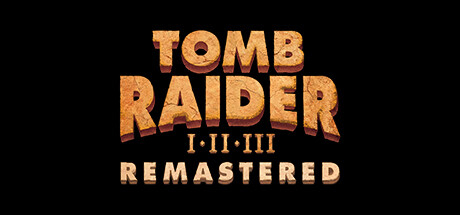

America - Front


America - Back

Tomb Raider I-III Remastered Starring Lara Croft
Aspyr
Action-Adventure
 02/14/24 Aspyr
02/14/24 Aspyr  (Add Date)
(Add Date) 02/14/24 Aspyr
02/14/24 Aspyr
| Owners: | 0 |
| Favorite: | 0 |
| Tracked: | 1 |
| Wishlist: | 0 |
| Now Playing: | 0 |
The Tomb Raider franchise has gone through many iterations over the years, but for many fans the original trilogy remains the gold standard. Those fans have reason to celebrate this month, thanks to the launch of Tomb Raider I-III Remastered, a compilation of the first three entries in the series, which debuted in the mid-to-late 90s on PlayStation and PC. Packaged with all of the DLC campaigns and featuring modern graphics and visuals, the collection aspires to be the definitive way to experience these classic games.
Tomb Raider I-III Remastered includes the following games: Tomb Raider (1996), Tomb Raider II (1997), and Tomb Raider III (1998). All three are third-person action-adventure games with an emphasis on exploration, precision platforming, environmental problem-solving, and shooting. By playing through the games in order via this collection, you can clearly observe how the series evolved over a three year period. The first game, with its slow-paced gameplay and greater emphasis on puzzle-solving and acrobatics, remains the best of the group. Its sequel, which added vehicles and new weapons, created a bolder, more intense experience focused on action. The final piece of the trilogy, Tomb Raider III, attempted to find a middle-ground between the preceding two, while upping the difficulty and making everything less linear.
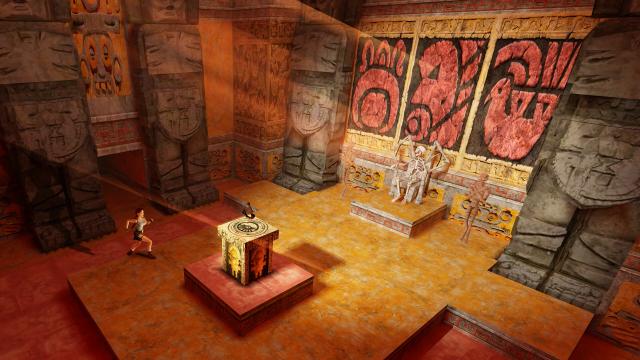
Even though 26 years have passed since these games first arrived on console and PC, they remain outstanding examples of the action-adventure genre. All three are worth playing, due to their risky high-wire platforming, tense shoot-outs, brain-teasing puzzles, and brilliant level designs. Each game had a set of flaws, sure — Tomb Raider ends in a slog, Tomb Raider II has a few too many "gotcha" moments, and Tomb Raider III can be frustratingly difficult at times — but the pros greatly outnumber the cons.
The original games are only one piece of the equation in Tomb Raider I-III Remastered. Developers Aspyr and Crystal Dynamics also added new visual and control options to all three titles, on top of (and as alternatives to) the polygonal graphics and tank controls from the 90s. As for the new visuals, they are simultaneously, and perhaps paradoxically, less and more than what you'd expect. They're less impressive because they're tied to the source code and engine from the PlayStation days. As a result, certain angular designs and fifth-gen geometry remain, despite the updated texture and lighting work.
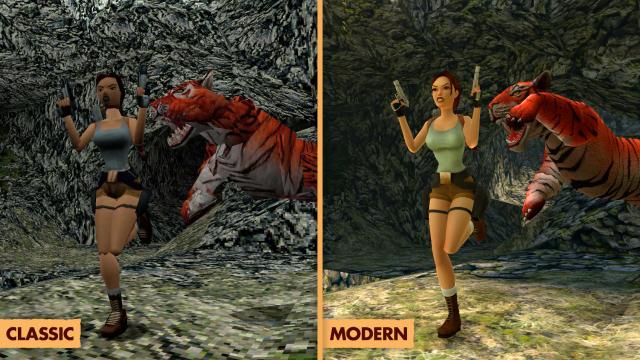
They're more impressive, conversely, because Aspyr and Crystal Dynamics dramatically changed the atmosphere and detail of each level, even with those limitations. The developers have done impressive work, replacing flat 2D item sprites with 3D assets, adding baked and real-time lighting effects to enhance immersion, and rounding out jagged models. Some of the most game-changing decisions involve small but dramatic changes to ceilings and sky boxes. A solid stone ceiling in the original Tomb Raider opens to a pale blue sky with drifting snowflakes in the remaster. A pixelated gray-blue sky in Tomb Raider III becomes a pink and purple sunset complete with god rays.
If there's a downside to all these visual upgrades, it's that the new graphics sometimes undermine the mystery of the games. Certain areas once shrouded in impenetrable darkness are now partially or totally illuminated, spoiling a few surprises. The improved lighting also renders flares, first introduced in Tomb Raider II, pointless. Previously pitch-black sections are now dimly lit, removing the need for additional illumination. Luckily, players can switch back and forth between the original polygons and the modern look at any time with a simple press of the plus button. Note that the frame rate will shift from 30 to 60 FPS when toggling between original and remastered graphics.
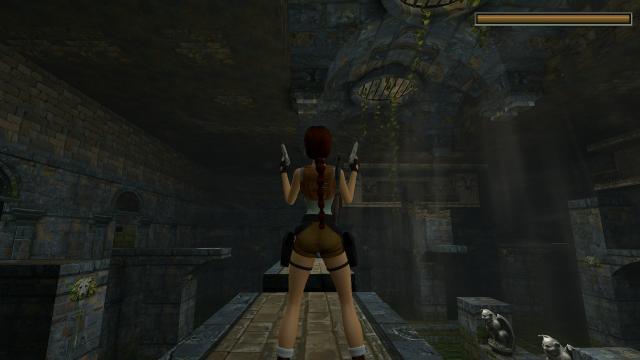
The development team behind Tomb Raider I-III Remastered took a similar approach to controls, allowing players to keep the original tank controls or swap to a more modern scheme based on the Legend, Anniversary, and Underworld era of Tomb Raider. Under this new scheme, the right stick has full camera control and the left stick moves heroine Lara Croft in any direction immediately. You can also ready your weapons quickly with the left trigger and fire with the right trigger. It all feels very fluid, especially juxtaposed against the rigid controls from the 90s.
However, those rigid controls were implemented for a reason. The first three Tomb Raider games were built around precise grid-based platforming that paired well with tank controls in the style of the original Resident Evil. Regrettably, the modern control set doesn't quite replicate the reliability of that old-school model. For starters, you can't backstep. For another, while you can technically perform side flips, back flips, and 180-degree mid-flip turns, they rely on a rather complex, unintuitive series of commands that are tricky to perform. You'll probably find yourself reverting to the "classic" controls for certain demanding platform sections, particularly towards the tail end of Tomb Raider II.
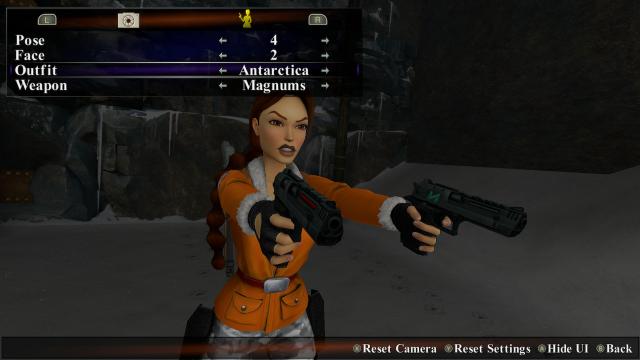
In addition to modern graphics and controls, Tomb Raider I-III Remastered introduces a few bells and whistles. It includes all of the trilogy's expansions: "Unfinished Business", which adds four bonus levels to Tomb Raider; "Gold Mask", which adds five bonus levels to Tomb Raider II; and "The Lost Artifact", which adds six bonus levels to Tomb Raider III. In addition, you can quick-save your game at any time (no more worrying about save crystals).
Finally, the collection arrives with a new, surprisingly detailed photo mode, which allows players to freeze gameplay by clicking in the left and right sticks. Once in the menu, you can change Lara's pose, facial expressions, outfit, and weapon, and move the camera to your desired angle. The roll and field-of-view can also be adjusted.

The only bonus item that feels missing here is a manual or how-to-play section. Each game comes with a "Lara's Home" training/tutorial area that familiarizes players with her acrobatic move set, but an extra list of commands and pro tips would go a long way, especially for the modern control scheme, since many maneuvers involve first equipping a weapon.
Even without additional training options, Tomb Raider I-III Remastered feels complete. What's more, it feels like the ultimate way to experience these PlayStation-era games. For purists, the original code remains intact, with all the sharp edges and meticulous controls you remember. For those who've played the trilogy a dozen times before and want a fresh experience, modern visuals and controls change things up considerably — often for the better, sometimes for the worse. Throw in all the expansions and the novelty of photo mode, and you've got a wonderful celebration of the origins of the Tomb Raider franchise.